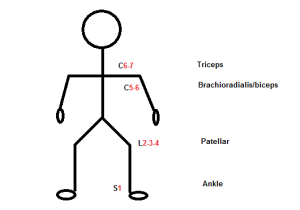Have you ever had to look up the modified Centor criteria when someone comes to you with a possible strep throat? You will have to look no more once you know the mnemonic “Old CAFE”. The WM is pretty sure it doesn’t exist elsewhere, so it just might be an exclusive one. :)
Old = Age
C = Cervical lymphadenopathy
A = Absence of cough
F = Fever
E = Exudates in the tonsillar region
Here is how to calculate the modified Centor criteria:
Age < 15 = +1 point
Age > 44 = -1 point
All the rest of the “CAFE” criteria = + 1 point
Here is how to use the modified Centor criteria:
-1 to 1 point = No testing, no antibiotics
2 to 3 points = Perform a culture, give antibiotics if culture positive
4 to 5 = Treat empirically with antibiotics +/- culture
Please click here to the following article for more information on pharyngitis guidelines.
————————————————————————————————————
Have a great week and happy studies.
Follow us to receive weekly posts directly in your inbox! Just enter your email address in the box on the top of the menu on the right and click “Follow”.
Click here to share a mnemonic for a future edition of The Weekly Mnemonic.
